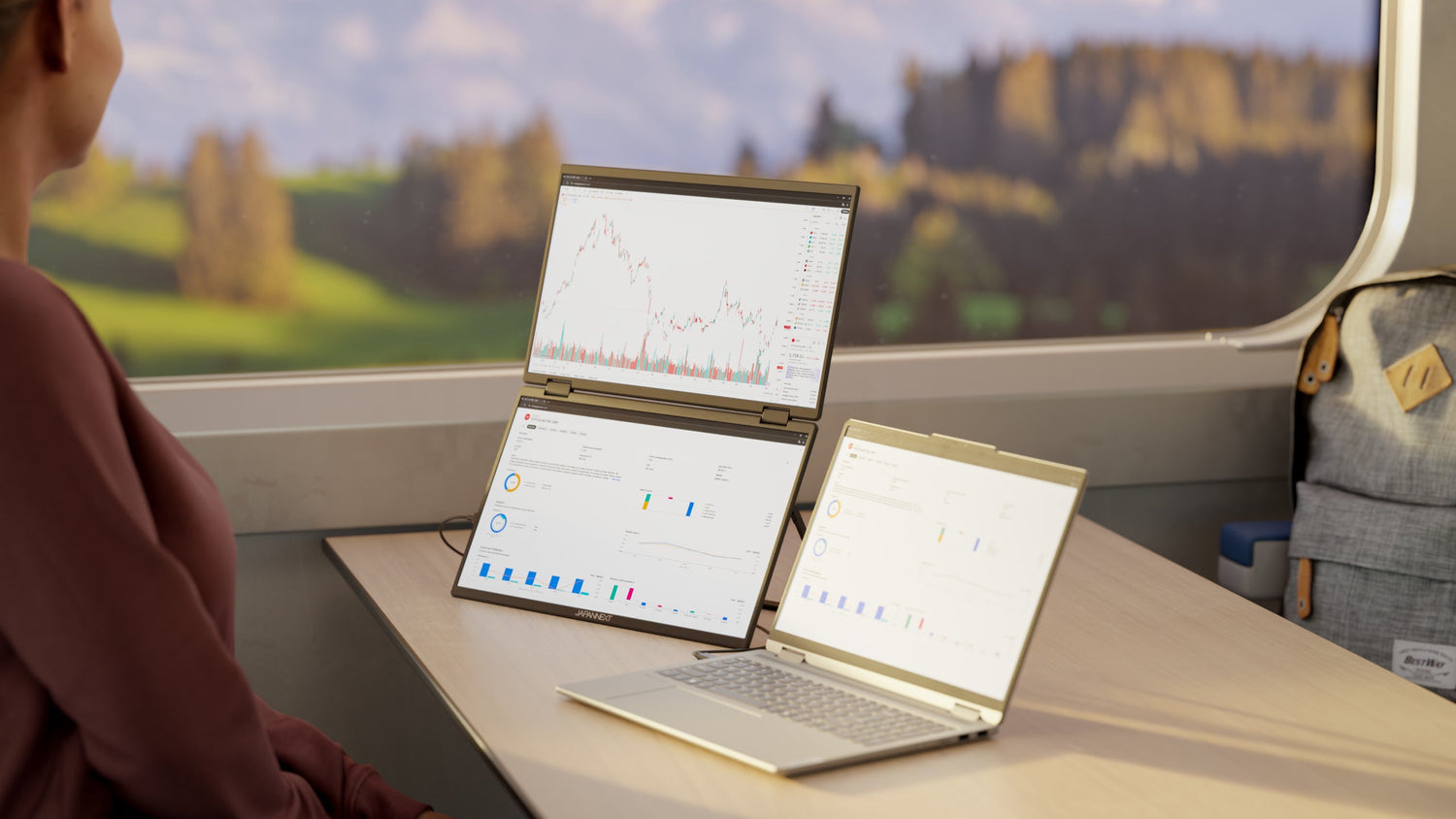Understanding 5K: Definition, How It Works, and Benefits.
5K resolution represents a major advancement in the world of digital signage, delivering a visual experience that pushes the boundaries of what was previously possible. This display technology redefines our expectations for image quality and visual accuracy.
What is 5K resolution?
5K resolution features an exceptional screen definition of 5120 x 2880 pixels, or more than 14.7 million pixels displayed simultaneously. This impressive pixel density significantly outperforms 4K, creating an unprecedented level of detail. Each pixel contributes to a remarkably sharp image, where the smallest details are rendered with extraordinary precision.
The term "5K" refers to the approximately 5,000 horizontal pixels, although the exact number is 5,120. This resolution offers approximately 77% more pixels than standard 4K (3840 x 2160 pixels) , which is a significant increase in display density.
The visual revolution of 5K
The impact of this screen definition on visual quality is instantaneous and striking. The pixel density achieved in 5K allows content to be displayed with a level of detail that is close to what the human eye can perceive at a normal visual distance. Text appears sharper, images more detailed, and visual content takes on a new dimension.
This high resolution virtually eliminates pixelation, even when watching the screen up close. Color transitions are smoother, gradients are more subtle, and visual depth is more pronounced. The amount of pixels available also makes it possible to display multiple windows or applications simultaneously without compromising readability.
Comparison with other resolutions
To put 5K resolution into perspective, let's compare it to previous standards:
- Full HD (1920 x 1080 pixels): 5K resolution offers almost 7 times more pixels
- QHD (2560 x 1440 pixels): 5K offers 4 times more details
- 4K UHD (3840 x 2160 pixels): the difference represents 77% more pixels
This progression in display definition illustrates the constant evolution of monitors technologies. Each resolution level brings its specific advantages, but 5K sets a new standard in visual quality.
Professional and creative uses
Creatives and image professionals find 5K resolution to be a particularly valuable tool. Photographers can view their images in unprecedented detail, allowing for more precise editing. Graphic designers benefit from an expanded workspace where every pixel contributes to the precision of their creations.
For video editors and post-production professionals, 5K resolution offers the ability to work on 4K content while still having space for software tools and interfaces. This flexibility significantly improves workflow and productivity.
Entertainment and user experience
In entertainment, 5K resolution transforms the visual experience. Video games offer exceptional clarity, with more detailed textures and more immersive environments. Movies and multimedia content take on a new dimension, with previously unnoticeable details becoming visible.
The high pixel density also enables a more comfortable visual experience, reducing eye fatigue during extended sessions. Text is sharper and more readable, improving reading comfort on screen.
Choosing your 5K monitor, the essential criteria:
Monitor technology plays a crucial role in the final image quality. IPS monitors typically offer better color reproduction and wider viewing angles, especially important for such a high resolution.
The screen size should be suited for the resolution: a 27-inch 5K monitor is an excellent compromise between display surface and pixel density. This size allows you to take full advantage of the benefits of high resolution while maintaining an optimal pixel density.
Let's not forget the importance of connectivity: transmitting a 5K signal requires significant bandwidth. DisplayPort 1.4 or Thunderbolt connections are generally recommended to take full advantage of this screen definition.
5K resolution represents one of the most advanced standards in digital signage today. It combines exceptional pixel density with a generous display space, delivering a visual experience that satisfies both the most demanding professionals and users looking for optimal image quality.
This technology perfectly illustrates the constant evolution of the world of digital signage, where each new generation of monitors pushes the limits of what is possible. 5K resolution thus sets new standards in terms of visual quality, perhaps foreshadowing future innovations in this constantly evolving field.
Technical aspects and performance
5K monitors require powerful hardware components to perform optimally. The graphics card must be powerful enough to handle more than 14.7 million pixels in real time, especially during demanding tasks like gaming or video editing. Recent GPUs integrate specific optimization technologies to handle these high resolutions efficiently.
Refresh rate also plays a crucial role in user experience. Although 5K resolution is a significant load on the system, modern monitors manage to maintain high refresh rates, typically from 60Hz to 144Hz, providing remarkable fluidity even at this exceptional display definition.
Impact on productivity
5K resolution radically transforms the way digital work is organized. The additional display space enables new and more efficient ways of working. For example, users can view multiple documents at once in full size, making it easier to compare and edit content.
For developers and programmers, this increased space allows more lines of code to be displayed while maintaining excellent readability. Architects and 3D designers benefit from a more detailed view of their projects, with the ability to observe the smallest details of their creations without having to constantly zoom in.
Technological advances and innovation
The increasing popularity of 5K resolution is driving innovation in several related industries. Graphics processor manufacturers are developing new display and optimization technologies. Content creators are adjusting their work to take advantage of the higher screen resolution, pushing the limits of visual quality ever further.
Video compression technologies are also evolving to efficiently handle these massive data streams. Higher-performance codecs enable 5K content streaming while maintaining optimal quality, opening up new possibilities in online entertainment.
Future prospects
5K resolution represents a significant step in the evolution of display technologies, but the innovation doesn’t stop there. Current research is focused on even higher resolutions, while also working on optimizing power consumption and performance.
The emergence of new technologies such as Mini-LED and Micro-LED has the potential to further improve the quality of 5K monitors, with sharper contrasts and better color reproduction. These developments could redefine our expectations in terms of visual quality in the years to come.
Environmental aspects and sustainability
The high resolution of 5K monitors also raises important questions about energy consumption. Manufacturers are developing optimization technologies to reduce power consumption while maintaining optimal image quality. Some monitors integrate ambient light sensors and intelligent energy-saving modes that automatically adjust screen settings based on the environment.
Sustainability is becoming a crucial aspect in the development of 5K monitors. Manufacturers are prioritizing recyclable materials and more environmentally friendly manufacturing processes, aware of the growing importance of ecological concerns in consumer choices.
The Difference Between 4K and 5K: Beyond the Numbers
The difference between 4K and 5K goes far beyond a simple increase in pixel count. While 4K offers a screen resolution of 3840 x 2160 pixels (8.3 million pixels), 5K pushes that limit to 5120 x 2880 pixels (14.7 million pixels). This 77% increase in total pixel count produces tangible differences in several areas of use.
In practice, this gap is particularly evident in creative work. A 5K monitor allows you to display a 4K image in full size while still having extra space for tool palettes, timelines or control panels. This feature is invaluable for video professionals who can edit 4K content with absolute precision, without having to resize their workspace.
5K’s higher pixel density also offers a significant advantage to display text and interfaces. On a 27-inch monitor, 5K resolution achieves a density of approximately 218 pixels per inch, compared to 163 for 4K. This difference makes text sharper and more defined, significantly reducing eye strain during extended work sessions. Smaller fonts remain perfectly readable, and icons appear more detailed.
In photography, 5K resolution allows for higher-resolution images with greater detail. Photographers can review their shots with increased precision, more easily spotting imperfections or areas that need editing. This higher screen definition also makes it easier to work on metadata and fine image details, such as textures or subtle gradients.
However, it’s important to note that these benefits come with higher technical requirements. Managing 5K resolution requires significantly more computing power and bandwidth than 4K. Graphics cards must be able to process nearly 77% more pixels in real time, which can impact performance, especially in demanding applications like gaming or 3D rendering.
In conclusion: 5K resolution, a standard of excellence
5K resolution is a major evolution in the world of high-performance monitor definitions. With its 5120 x 2880 pixels, it sets a new standard that significantly exceeds the possibilities of traditional 4K. This higher screen definition offers remarkable pixel density, particularly appreciable on 27-inch professional monitors where 5K resolution shows its full potential. For creatives who hesitate between QHD, 4K or 5K, the choice becomes obvious when you consider the richness of detail and precision that this resolution brings.
The transition from QHD to 4K and then to 5K resolution is a perfect illustration of the constant evolution of monitor technologies, where each new level of screen definition brings its share of significant improvements. The extra millions of pixels that 5K offers compared to 4K are not just a matter of statistical improvement, but a real revolution in the way we perceive and work with digital content.



